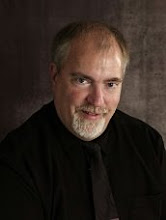Film and photo--honest record or deception?

A few years ago, I took a course at UW-Green Bay called “German Cinema.” Many of the films we viewed in that class are the same ones I use in my upper-level German classes in high school. You may not necessarily think that a class on movies would be that challenging. After all, our discussions are normally pretty shallow (perhaps reflective of our choices in cinema), as in “Did you see Talladega Nights? Yeah, it was hilarious! I thought it was stupid”…or awesome…and so on. Seldom, if ever, do we discuss camera angles and scene selection, character development, motif and theme. A university class on film treats a movie as a work both of literature and of visual art. I hope that in German class we can do the same thing when we watch “Beyond Silence” and “Run, Lola, Run.”
Last week I saw Oliver Stone’s World Trade Center. The director is getting some pretty good reviews, partially, I believe, because he keeps the film relatively politics-free. He simply tells the story of heroism and survival, of sacrifice and commitment of human beings toward one another. Some reviewers like the movie, but complain that we never see the enemy. Unlike United 93, when courageous passengers overcame the hijackers who commandeered their plane, all we see of the attack on the World Trade Center is an ominous shadow of a jet and a horrific explosion. As far as stories of courage and heroism go, the policemen who were rescued really didn’t save anyone. They went into the first tower and were heading for the elevator when the building started to collapse. In retrospect, we know that they were risking their lives in order to rescue others, but no one at the time could have known that the collapse was imminent, or they would not have gone in. I think one of the most striking images in the film (no, not Jesus coming with water) was toward the end, when Stone showed subway cars and ferries running…without passengers. Coupled with all of the “missing” posters on the hospital wall, it was a stirring reminder of the victims, who were more than just casualty counts, but real, special, beloved sons and daughters, husbands and wives, fathers and mothers.
During the past week, we also saw a ceasefire in the month-long conflict between Israel and the Iran-sponsored Shiite terrorist group known as Hezbollah. News reports and photographs of the conflict were decidedly anti-Israel. In fact, a photographer from Reuters news agency was fired for embellishing (that is to say, falsifying) his images with Photoshop. Some 900 pictures from this photo-“journalist” were removed from Reuters’ online archives because of their desire to distance themselves from this unethical man. But the damage has been done. How many people have formed their impression of right and wrong in this conflict because of the altered images they saw? Author Michelle Malkin has coined a word for such falsified pictures: fauxtos (Faux being the French word for “false” and is pronounced “fo”). But liberal journalists have an anti-war, anti-American, and anti-Bush agenda, and, like Civil War photographer Matthew Brady, progressive era muckraker Jacob Riis, and even Vietnam-era videographers from the jungle, skilled cameramen embellish and stage pictures to suit their politics and purpose.
Chapter 10 of How Should We Then Live? explores the modern visual artist and the fragmented sense of reality they conveyed. Use the comment section to discuss your response. I’m hinting also at the next chapter’s discussion of manipulation as well, since visual images do such an effective job of affecting our emotions. Feel free to talk about photos or movies you’ve seen recently that seem to fit here.


<< Home